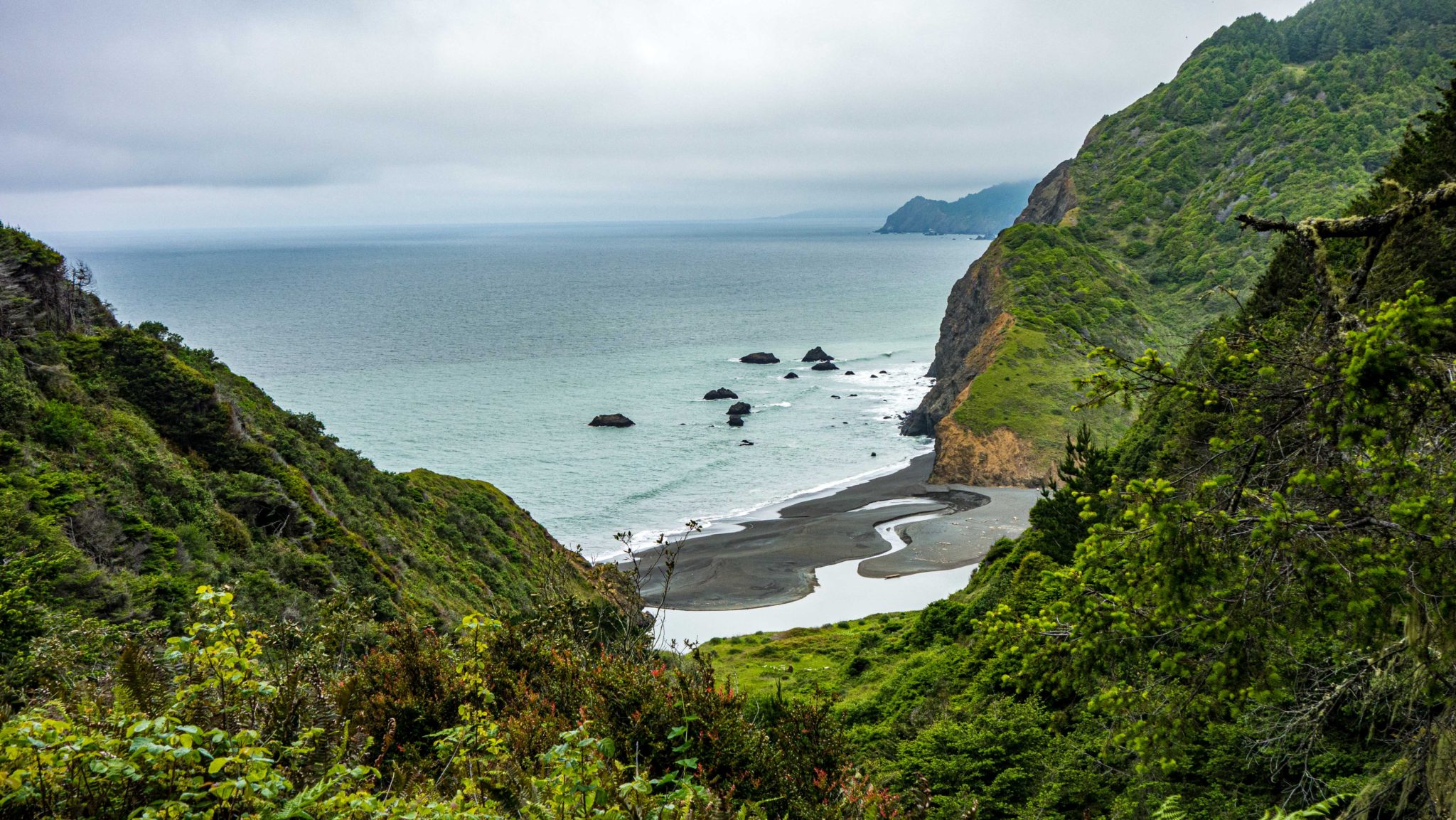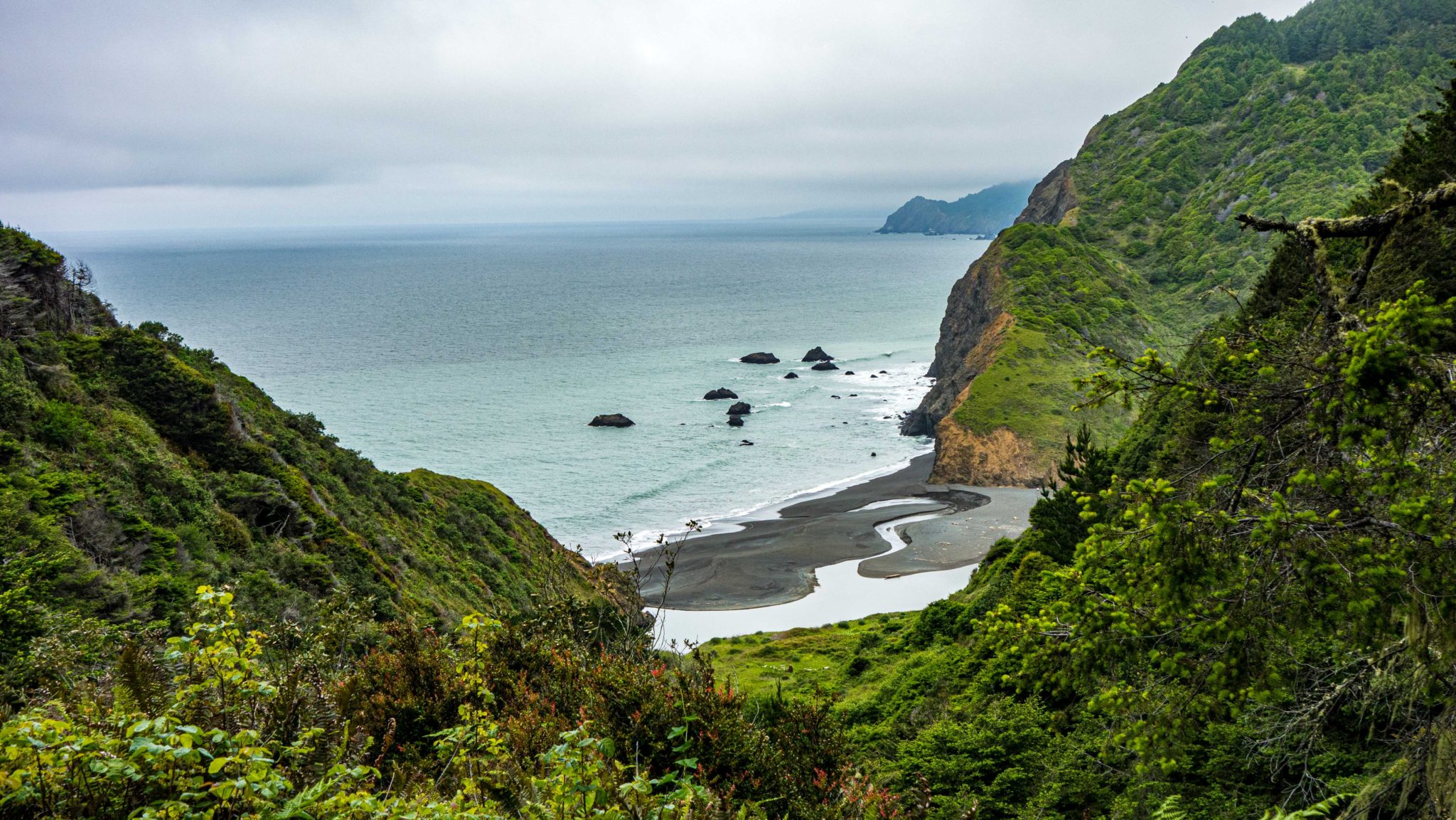
Jeff Mogavero is uniquely positioned to tell stories from the Lost Coast. As a wildlife biologist he spent 7 months trekking deep into remote coastal streams in search of spawning salmon and steelhead. As a runner he recently set the supported FKT on the Lost Coast Trail, a 10 hour and 10 minute sprint across the 57 miles of beach, trail, and views, from Mattole River to Usal Beach.
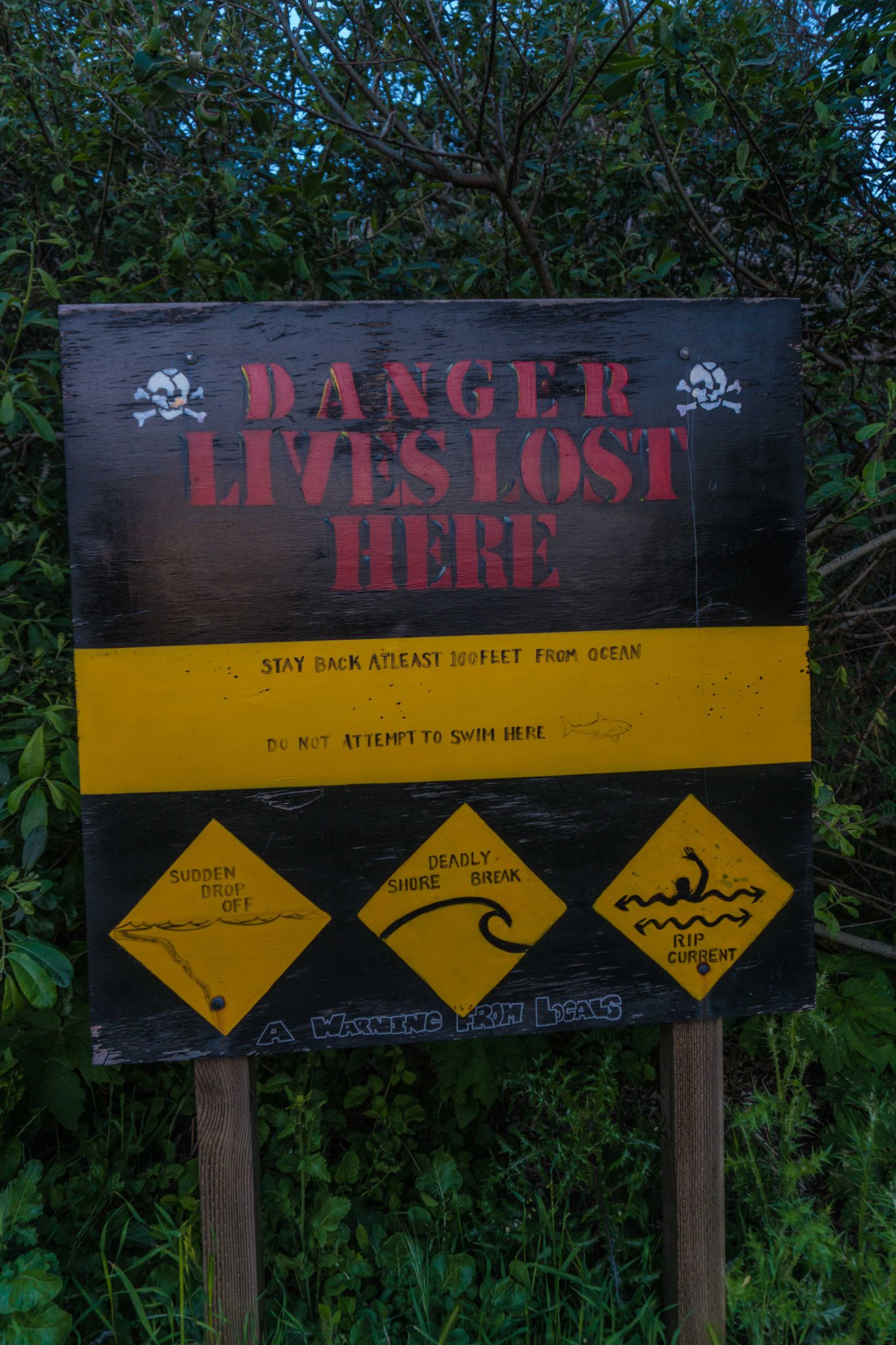
Two naked women came sprinting across the sand towards me. They were clad in nothing but American flag hats, dollar store sunglasses, mardi gras beads, and one, a giant fur coat flowing in the wind. Dana handed me a plastic pineapple filled with hydration mix. I sipped out of the frilly green bendy straw and stripped the pack off my sweaty back. Jordan tossed me a fresh handheld bottle as I looked up at a weathered plywood sign locals had posted where beach meets road: “DANGER -LIVES LOST HERE.” Arriving at the painted skull and crossbones meant that I had safely made it through the first 25 miles of this journey.
Jordan and Dana were total strangers less than a month ago, and now thanks to a series of serendipitous events unique to the ultra community, they were my crew and fully committed to my physical and psychological well being. We chatted briefly about their lack of clothes and how sore I was from running on sand for the rough equivalent of a marathon. Then as quickly as they appeared, the girls left me to run away into the ocean. I exited the beach and began a 2,000-foot road climb from sea to summit. I had to move quickly if I wanted to best ultrarunner Dylan Bowman’s fastest known time on northern California’s Lost Coast Trail.

Four and a half hours earlier, we had stood at Mattole Beach on the periphery of a vast coastal wilderness. Jordan snapped a photo of me and I gave her a nervous high-five. A shiver coursed through my body as I turned and started running into the pre-dawn darkness. Miles ticked off as I slipped silently past sleeping seals, sea lions, and unsuspecting slumbering campers. To my left, sea-spray coated cliffs vaulted out of the sand. Above them, the King Range rose thousands of feet into the star-studded night sky. To my right, the Pacific Ocean crashed onto the rocky shore, jostling pebbles, a musical pattering. I ran on a narrow strip of earth between sea and summit.
After an hour of running, I clicked off my headlamp to watch the pinkening sky bring the severity of the mountains before me into focus. I gazed down the peak-lined coast. I had traveled perhaps seven miles and was about to enter the first of two four-mile impassible zones, where the high tide consumes the Lost Coast Trail twice a day. Ahead of me lay 18 more miles of beach and rock running, followed by 32 miles (and over 10,000 feet of climbing) in the mountains. I settled in for 50 more unforgiving miles on Northern California’s fabled Lost Coast. As footstep after footstep sank into damp sand, I mused over how I had come to find myself in this situation.
For nearly seven months, I had been living an hour and a half south of Usal Beach, the southern end of the Lost Coast, in the small coastal town of Fort Bragg. From Usal, another four and a half hours of nausea-inducing driving would take a determined traveler to Mattole Beach, the northern terminus of the Lost Coast Trail. The 57-miles in between these two beaches proved to be too gnarled for the ambitious builders of California’s famous coastal highway. These miles were “lost,” and with the absence of a road, the Lost Coast was born.
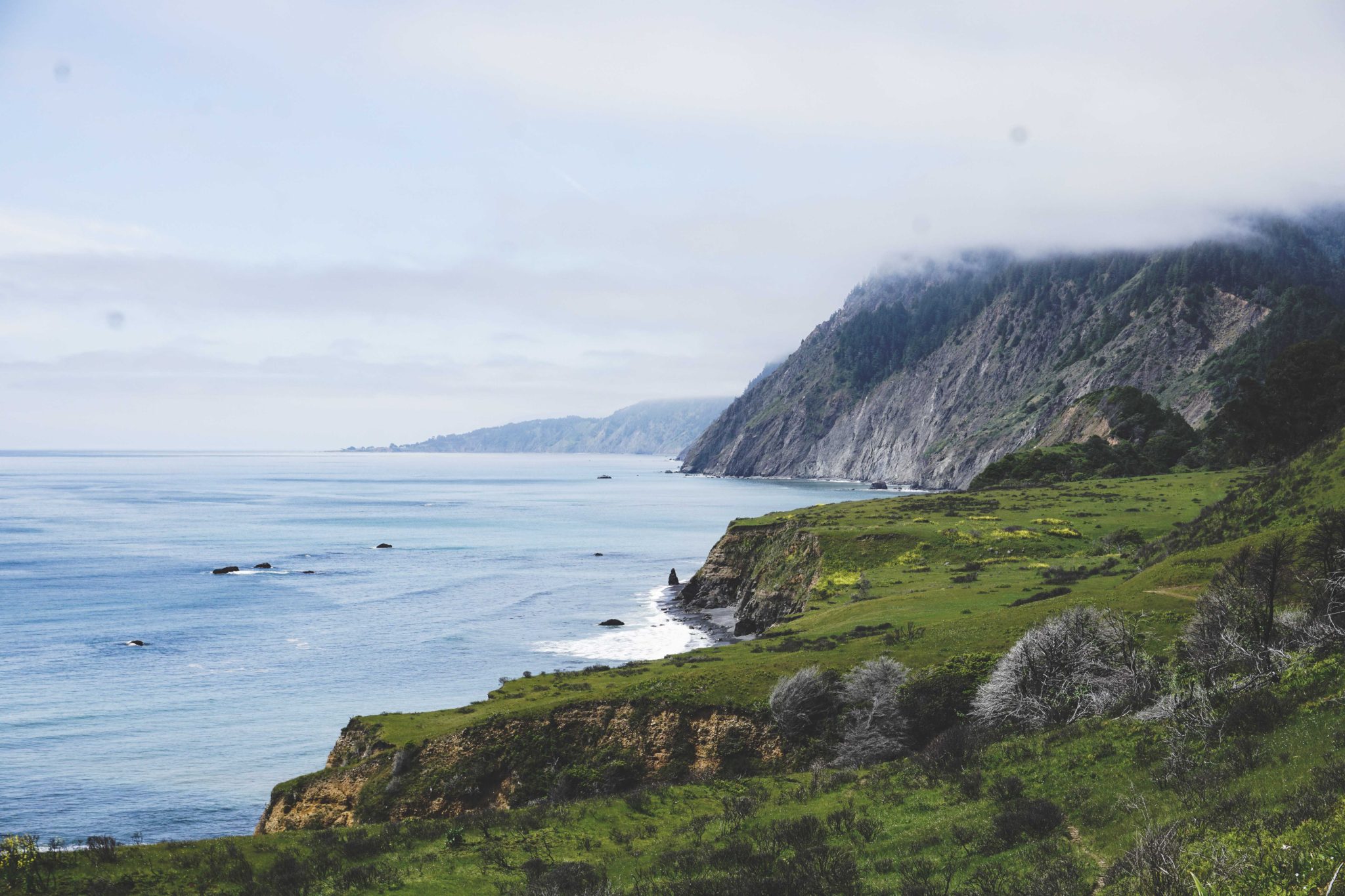
Throughout the winter, I was working for the state as a seasonal fisheries technician, probing coastal streams and rivers to collect data on the endangered salmon returning to spawn. Twice, my coworkers and I had to abandon plans to backpack the northern part of the Lost Coast due to weather on the notoriously stormy coastline. But the Lost Coast remained just north, a wild adventure nagging in the back of my mind.
Out of the blue in early April, my supervisor texted me a video of Dylan Bowman running the complete Lost Coast Trail (both the southern and northern sections), setting a new fastest known time (FKT) on the route. I stared at my phone and wondered if I might be able to best Dylan’s time of 11 hours and 12 minutes. Waves of self-doubt and excuses came over me. Any hard effort would be physically draining and mentally brutal, not to mention logistically baffling. The reasons why I was destined to fail began to pile up. I quickly shook these insecurities before they could settle, and instead stoked a fire inside myself. I looked at my phone again and began typing without thinking. “Is this a challenge? Because I am SO down.” And that is how I ended up, a month and a half later, shivering in the dark at the Mattole Beach trailhead at 4:30 in the morning.

The next time I saw Jordan and Dana, they had their clothes on, and I had taken mine off. The sun had blasted me on the 2,000-foot road climb out of Shelter Cove. I quickly shed my shirt as the temperature rose in sync with the topography. I had left the bluff-lined beach below and just finished the first major climb of the 32 rugged King Range miles to come. Jordan and Dana, now sporting butterfly wings and other dollar store accessories, helped me as I prepared to enter the labyrinthine trail that stretched south to Usal. This was my final pit stop before entering the southern wilderness. It was also a chance to once again drink water from a plastic pineapple.
A scouting run I had done a few weeks earlier revealed that much of the next marathon would be heinously overgrown with stinging nettle, thistle, poison oak, and blackberries, commingled into thickets of doom intent on ripping anyone who dared pass to shreds. As a Hail Mary precaution, I covered my legs in strips of KT Tape, praying they would form some kind of barrier against the angry vegetation.
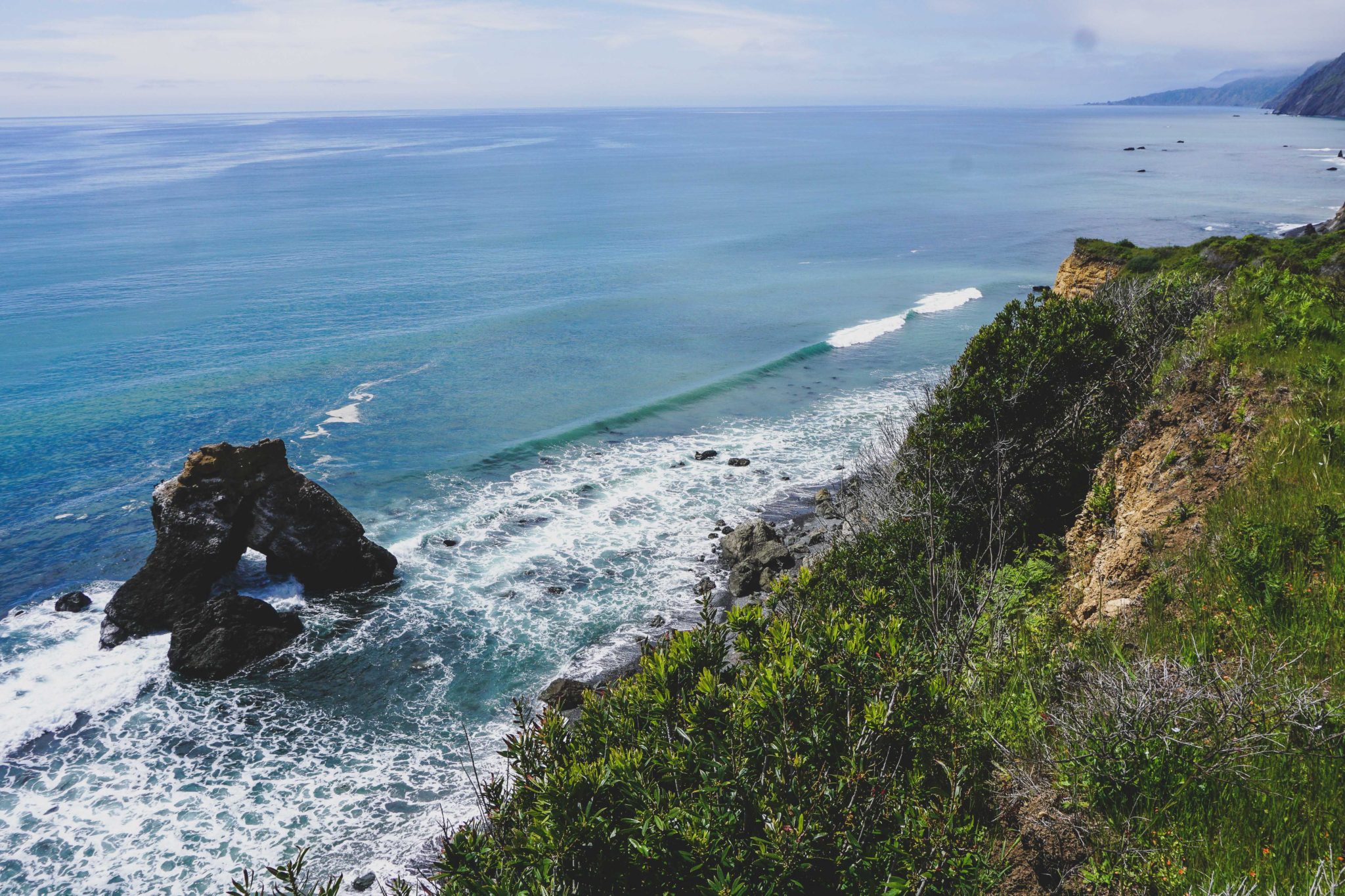
A few miles later, hands on my knees, sweat dripping into my eyes, I grunted up yet another steep climb. In the absence of my exuberant crew, my tired mind settled on appreciation. I circled back to the fact that my crew had been nude a few hours before and insisted on giving me water only through a now-beloved plastic pineapple. Not to mention, they had driven over a dozen hours to help me spend a day throwing myself against one of the gnarliest chunks of coastline in the country.
Forty miles in, 17 miles to go, on this sinuous redwood coast. I crested the top of a ridge and gleefully let my legs spin as I descended a rooty trail winding through a grove of towering conifers. Running out of the woods, I navigated a steep, grassy hillside that plummeted into the ocean hundreds of feet below. The hip high grass was punctuated with tunnels of bushes and trees. I ducked, dodged, and fell to the ground for the fifth time in minutes. So much had gone into this attempt, and here I was falling on the ground and crawling on my knees. The trail was in such rough shape that I had no control over my pace, which had slowed to a literal crawl as I neared mile 57.
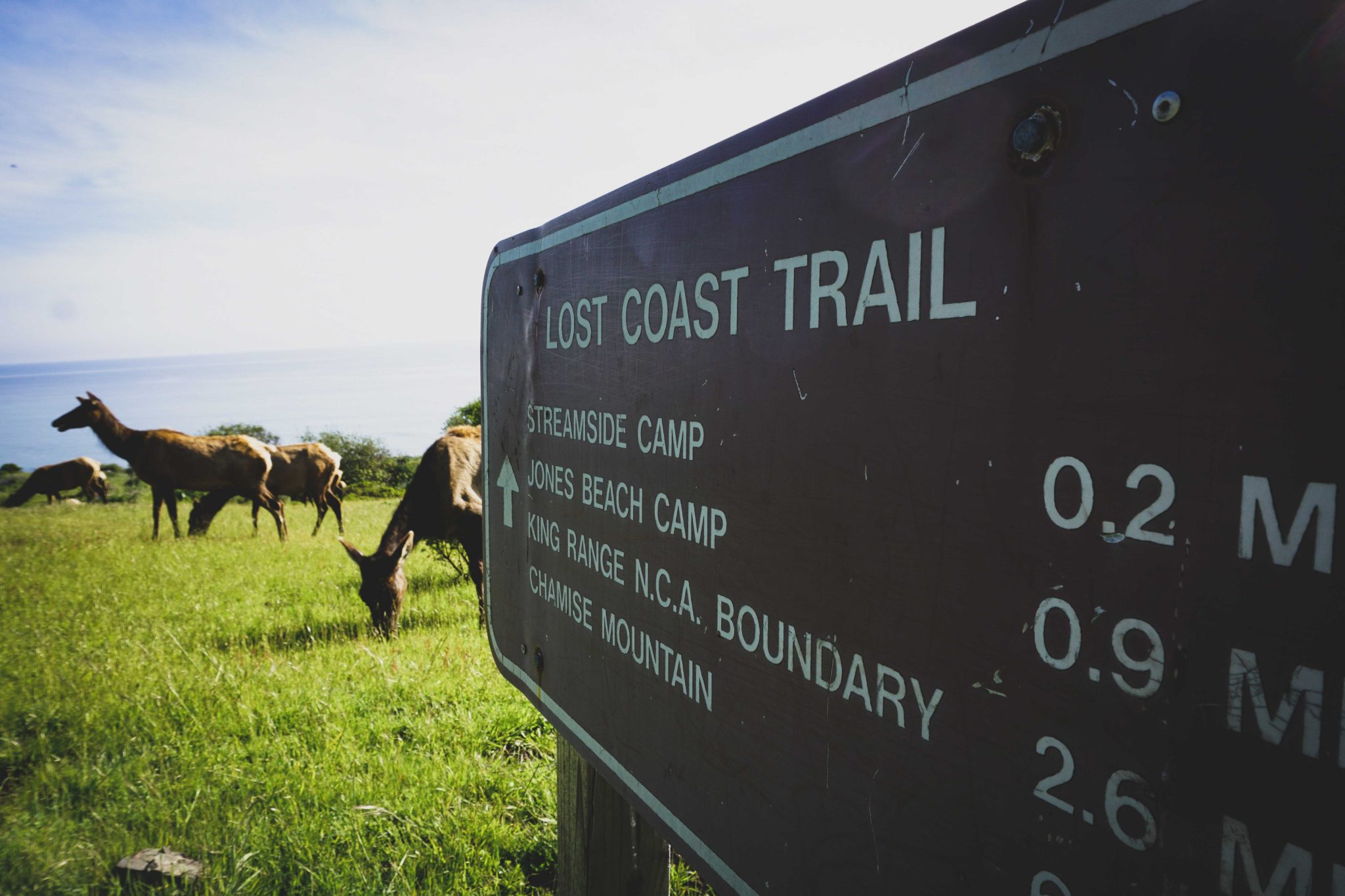
I was beaten, I was exhausted, and I was ready to be done. Even so, there I was moving my blistered feet and shredded legs. My mind floated to all of the things I had seen that day. I had run through the middle of a herd of 30 elk (in hindsight, not recommended) and listened to elephant seals barking in the dark. As the trail conditions eroded, my love for this place grew. Despite the adversity, I was enraptured by the most beautiful and diverse route I had ever traversed.

Rolling into the Usal trailhead exhausted and thrilled, I glanced at my watch. I had managed to travel the 57-mile Lost Coast Trail in a new fastest known time of 10 hours and 10 minutes, over an hour under the old record.
Traveling the Lost Coast Trail in a day gave me a brief yet powerful glimpse at a truly remote and wild land tucked within the most populated state in the nation. For an FKT attempt like this, there was no fanfare or hoopla. Instead, there was just a text message from a supervisor and three people that did not know what they were getting themselves into. As Jordan and Dana handed me a comical “certificate of achievement” complete with sequins and glitter, I realized what the ultrarunning community can do when it comes together to support one another. Armed with nothing but a plastic pineapple, and perhaps clad in nothing, strangers can help new friends chase dreams.
Jeff Mogavero is a runner, writer, wildlife biologist who’s running and ramblings bring levity, insight, and passion to our community. Read his full FKT report and other writings at https://www.jeffmogavero.com/

